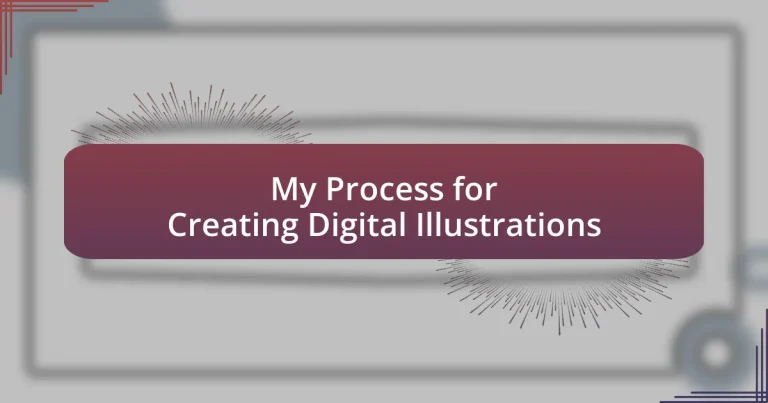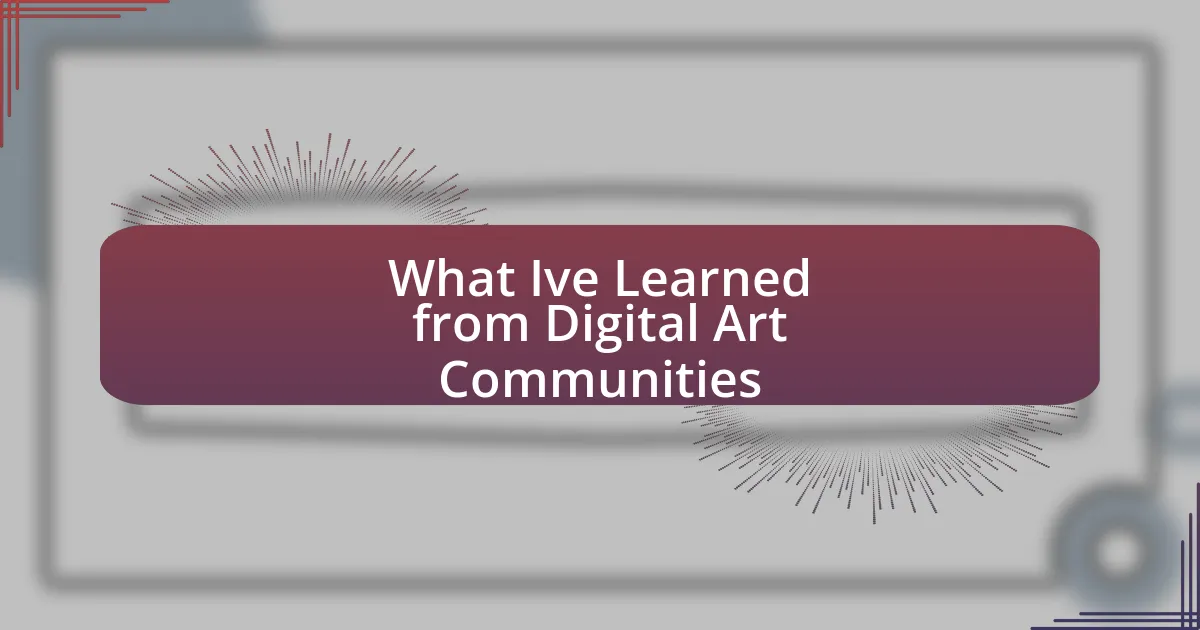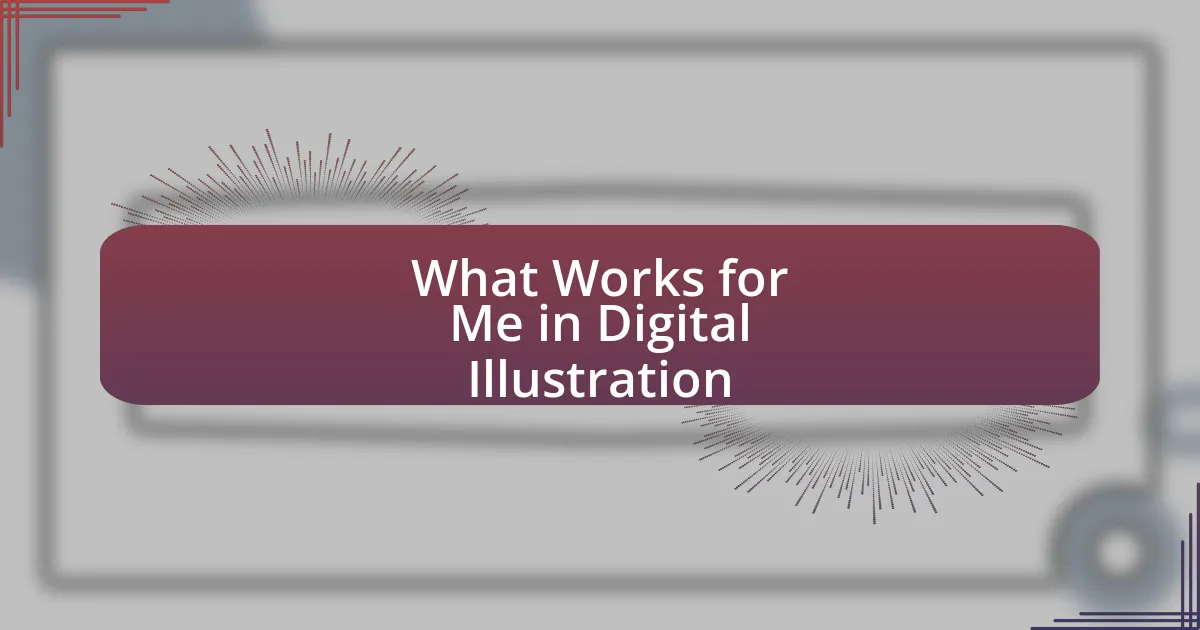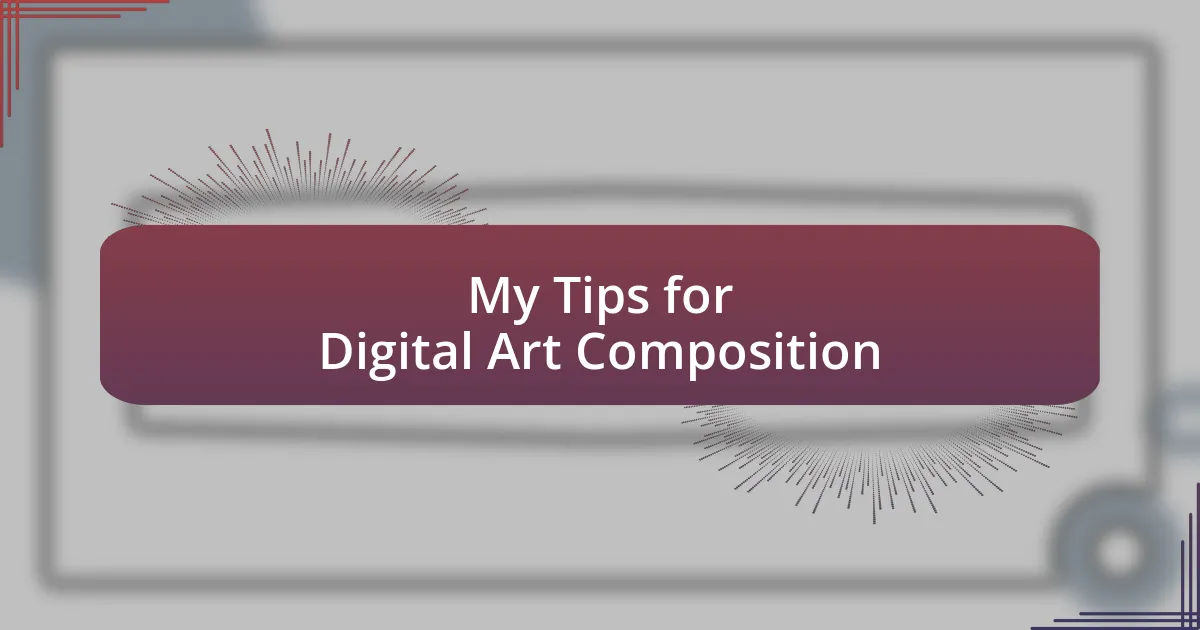Key takeaways:
- Understanding digital illustration techniques involves mastering layering, color blending, and the balance between line art and shading to enhance emotional expression.
- Choosing the right tools, such as graphics tablets and illustration software, can significantly impact creativity and artistic style.
- Developing a creative concept through brainstorming, narrowing down ideas, and visualizing with thumbnails is essential for effective storytelling in illustrations.
- Finalizing an illustration requires careful review of details and exporting settings, along with creating backups to safeguard against data loss.
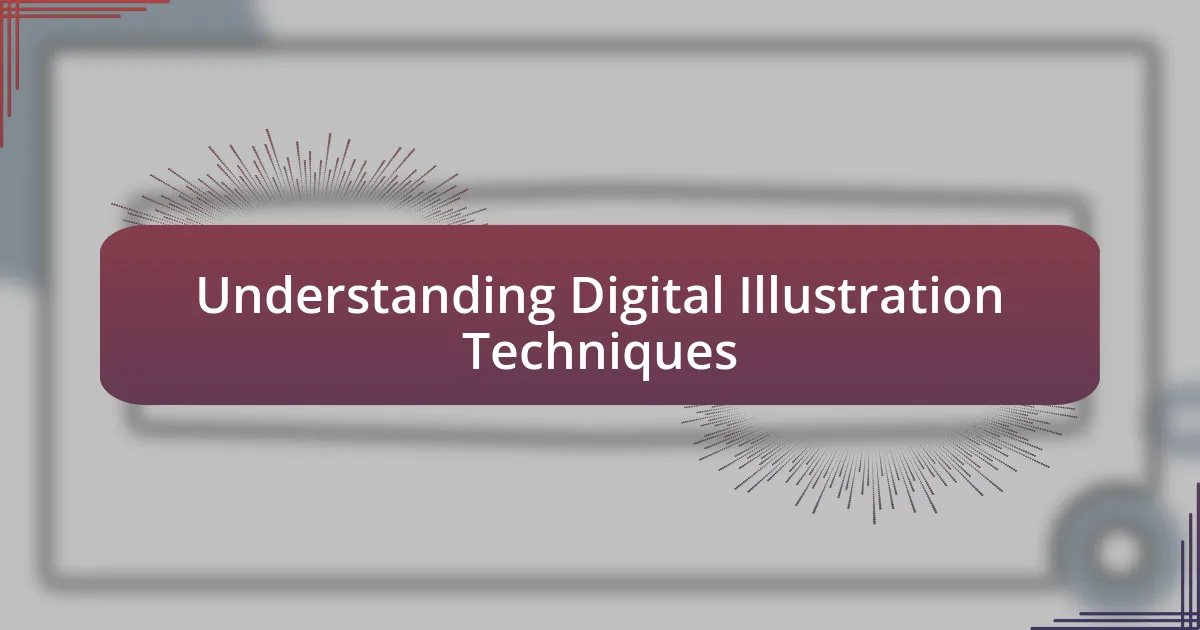
Understanding Digital Illustration Techniques
Understanding digital illustration techniques goes beyond just knowing the tools; it’s about cultivating a style that resonates with your emotions and vision. I remember the first time I experimented with layering techniques. I was astonished by how simple overlapping shapes could create depth and bring my drawings to life. Have you ever found yourself lost in a project, only to realize that a single technique like this can transform the entire piece?
Color blending is another essential technique that I’ve found to be a game-changer in my work. When I started using gradients, I felt like I was finally able to express the mood I intended. There’s something magical about seeing colors merge seamlessly—it can evoke feelings that flat colors simply can’t. What techniques have you explored that changed your perspective on your artwork?
You might also find that understanding the balance between line art and shading can elevate your illustrations. I still vividly remember the first time I boldly decided to reduce the line work in one of my pieces; it felt liberating. I wondered, what if I let the light and shadows do the talking? The result was stunning, and it was a great reminder of how experimenting with techniques can lead to unexpected, rewarding outcomes.
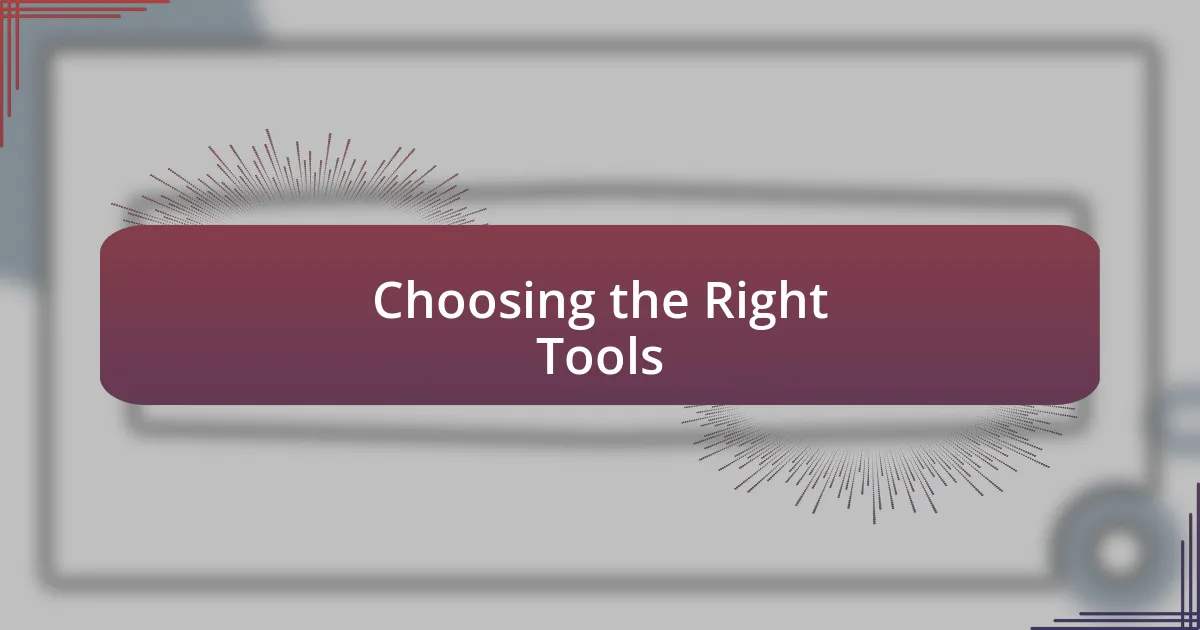
Choosing the Right Tools
Choosing the right tools is a fundamental step in my digital illustration process. I’ve often found that the software I choose can influence my creativity and the freedom I feel while working. For instance, I once switched from a popular illustration program to a lesser-known one, which initially felt daunting. However, that software offered unique brush options that helped me define my style in ways I hadn’t previously imagined.
Here are some essential tools to consider:
- Graphics Tablet: Investing in a quality tablet can significantly enhance your control and precision. I remember switching to a tablet with pressure sensitivity; it transformed how I approached line work and shading.
- Illustration Software: There’s a multitude of software options out there. I recommend experimenting with a few to find one that aligns with your workflow. My personal favorite is the one that feels intuitive and offers customization.
- Brush Packs: Utilizing various brush packs can expand your artistic capabilities. Some may specialize in textures, while others mimic traditional media—these can be game-changers in achieving the look you want.
- Color Palettes: I often create my own color palettes. Using tools that help simplify this process allows me to focus on the creative aspects rather than getting bogged down in choices.
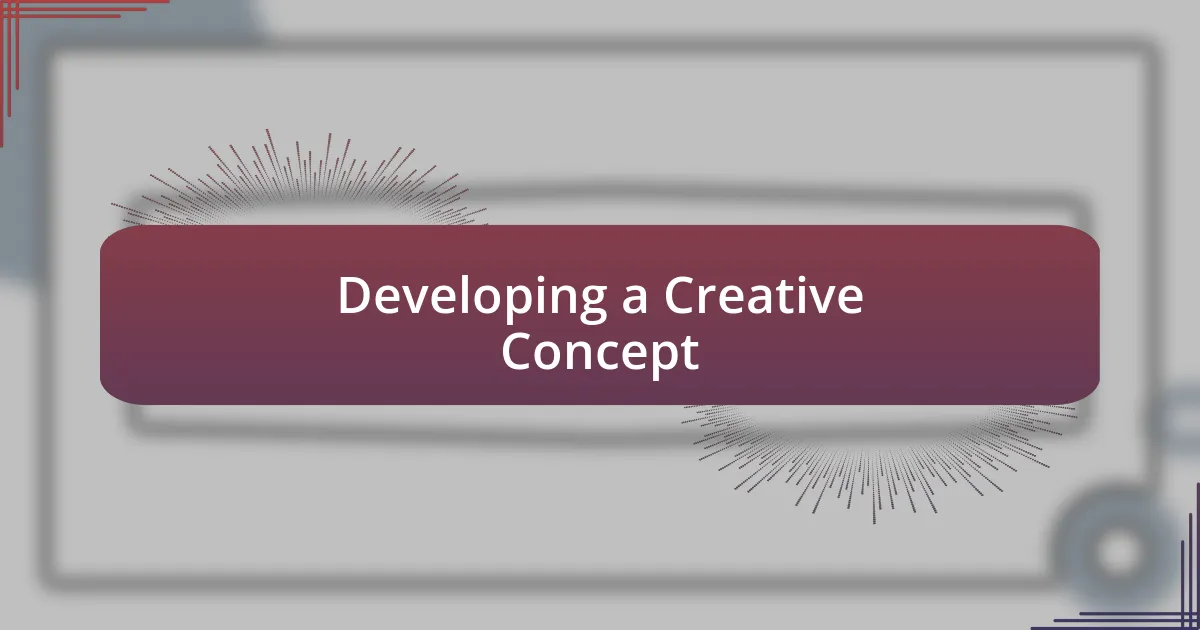
Developing a Creative Concept
Developing a creative concept is where the magic truly begins for me. I like to start with brainstorming sessions, jotting down words and images that resonate with my project’s theme. For instance, when I worked on a fantasy illustration, I filled my sketchbook with doodles inspired by nature and mythology. This initial outpouring of ideas not only excites me but often leads to unexpected inspirations I hadn’t considered before.
After brainstorming, I focus on narrowing down these ideas into a cohesive concept. Here, I reflect on the emotions I want to convey and the story I want my illustration to tell. A poignant experience I had while creating a character design was realizing that a single expression could shift the entire tone. It was a breakthrough that taught me the importance of emotional depth in my concepts.
Finally, I visualize my concept through thumbnails, which are small sketches representing different compositions. This step is crucial; it’s how I explore various layouts without committing to a single idea immediately. Once, while working on a book cover, I created over a dozen thumbnails before settling on one that perfectly captured the narrative’s essence. Each revision pushed me closer to the creative vision that felt just right.
| Aspect | Details |
|---|---|
| Brainstorming | Initial idea generation, using words and images. |
| Narrowing Concepts | Focusing on emotions to refine the creative vision. |
| Thumbnails | Quick sketches to explore composition ideas efficiently. |
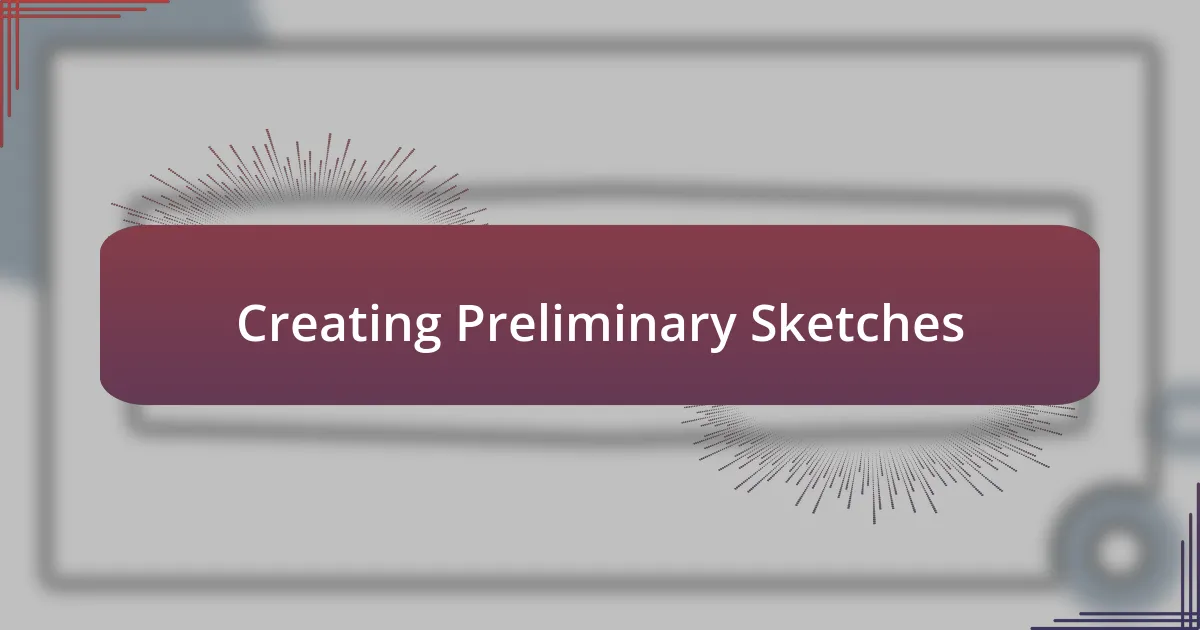
Creating Preliminary Sketches
Creating preliminary sketches is a crucial part of my artistic process. I usually begin with loose, gestural lines that capture the essence of my ideas rather than aiming for perfection. I remember sitting at my desk one rainy afternoon, sketching a character in a whimsical pose, feeling the freedom of those initial strokes. It’s liberating to let go of precision and simply explore possibilities.
As I refine my sketches, I pay close attention to proportions and movement, often asking myself how the character feels in that moment. This introspection allows me to convey not just what the character looks like, but how they embody their story. A specific moment that stands out was when I was designing a heroic figure; the tilt of their head and the slight bend of their knees gave life to their determination. It’s amazing how subtle adjustments can breathe so much life into a drawing.
Once I feel satisfied with my preliminary sketches, I select a few favorites to develop further. This part of the process is like inviting my sketches to speak; they lead me to various facets of the character’s personality. There’s a certain thrill in choosing which sketches hold the most potential. I find that this decision-making phase can sometimes lead to unexpected discoveries, shaping the direction of my illustration in ways I hadn’t anticipated.
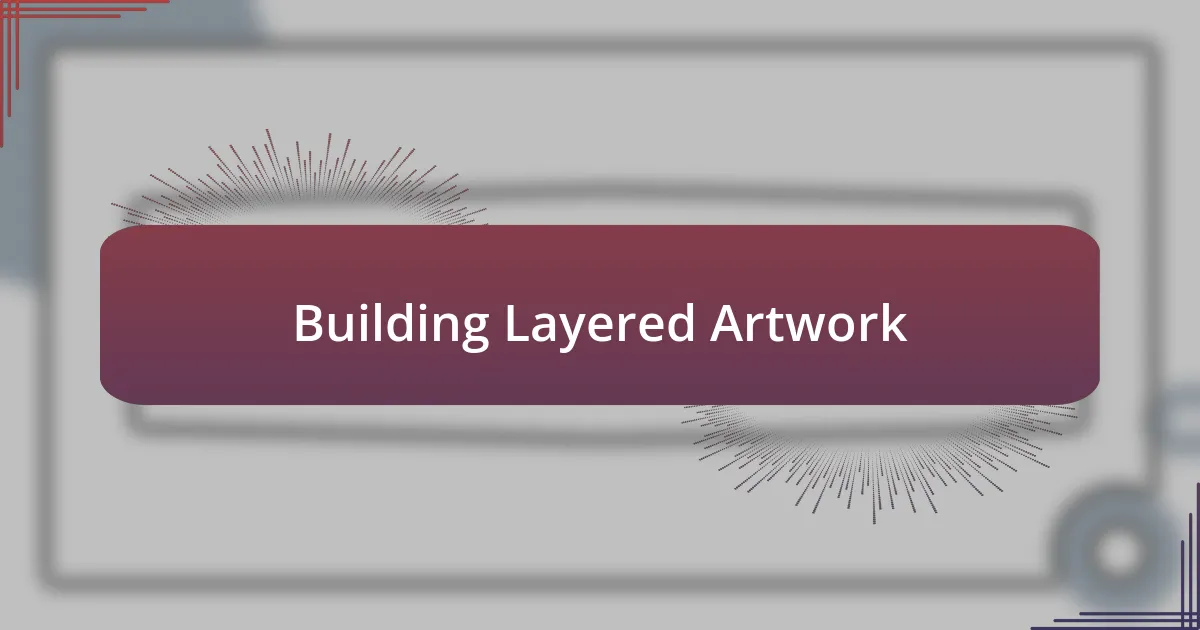
Building Layered Artwork
Building layered artwork is where the magic truly happens for me. I start by choosing a solid base layer, often a simple background or color wash, to establish the mood of the piece. I still remember the day I decided to create a dreamy landscape; laying down that first soft gradient felt like setting the stage for a story yet to unfold.
As I build up layers, I find it’s essential to work from broad shapes to finer details. Each layer acts almost like the chapters of a story, with each detail deepening the narrative. In one of my more complex illustrations, I vividly recall how adding a translucent layer of clouds transformed a static scene into something dynamic and immersive. It made me think: how can a simple cloud convey movement and emotion?
With each layer, I evaluate what works and what doesn’t, often erasing or adjusting elements to achieve balance. There are moments when I question if I’ve added too much, but I’ve learned that sometimes less really is more. Trusting your instincts during this part can make a world of difference. Just like in life, the layers of an illustration can reveal hidden depths or, at times, mask the true beauty beneath the surface.
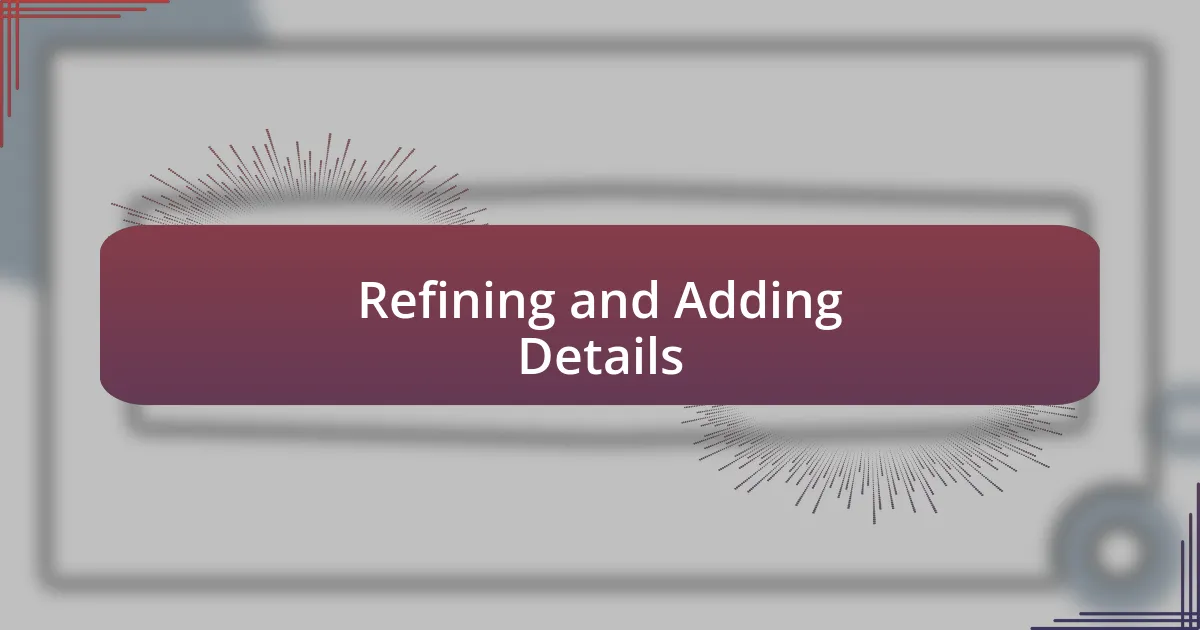
Refining and Adding Details
As I refine my illustrations, I tend to focus on the smaller details that bring the artwork to life. I recall a time when I spent hours adding texture to a tree bark in one of my pieces; those tiny grooves and shadows created a sense of realism that transported viewers right into the forest scene. Isn’t it fascinating how minute adjustments can evoke such a strong emotional response?
Adding details also involves choosing the right colors and contrasts to highlight specific areas. I often experiment with varying opacities and blending modes to give dimension. There was this one illustration where adjusting the highlights on a character’s face completely changed the mood – it went from somber to hopeful in an instant. How do you decide which parts need extra emphasis in your own work?
I also believe that refining is about stepping back and gaining perspective. Sometimes, I think I’ve nailed the details, only to return after a break and realize a part of the piece feels off. It’s akin to revisiting an old photograph; details that seem insignificant at first can reveal themselves as essential to the overall composition. This practice of stepping back is invaluable and reminds me that creation is truly a journey.
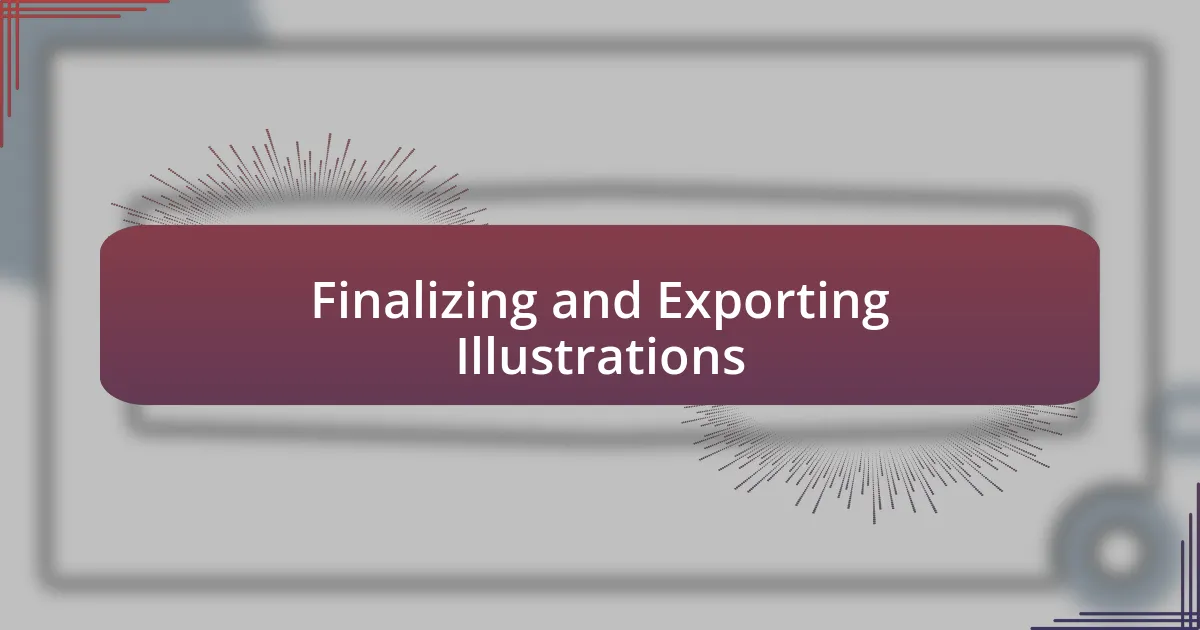
Finalizing and Exporting Illustrations
Finalizing my illustrations is where everything comes together. I find it crucial to review each element one last time before exporting. I still remember an instance when I almost overlooked a shadow that added depth to my character; it wasn’t until I zoomed out and saw the whole picture that its importance hit me. Have you ever had that moment where a small detail suddenly transforms your entire work?
Once satisfied, I turn to exporting, which can feel daunting if you don’t pay attention to the settings. I’ve had experiences where I exported an illustration at the wrong resolution, only to realize later it was too pixelated for print. To avoid such missteps, I always double-check that I’m using the appropriate file format and settings for the project. What about you—how do you ensure quality in your final output?
Lastly, I like to create a backup of my files before exporting. The peace of mind that comes from knowing I can return to the original is immense. I once faced the horror of losing a digital piece due to a software glitch, which taught me that saving multiple versions is a safety net every artist should establish. How do you safeguard your work during the editing and exporting process?

